Vacant structures can have a negative impact on the quality of life for the surrounding neighborhood. Blighted vacant structures and those which are unsecure and have poorly maintained yards can have a compounding effect on our resident’s ability to sustain or enhance their neighborhood. As such, the City of Rochester has an aggressive policy of monitoring vacant structures as per §90-17 of the City Code.

City Owned Vacant Structures
City owned vacant structures are separated into two categories, those to be demolished and those to be sold. Once the city takes possession of a structure, it is placed on a list with the Department of Environmental Services to have the grass cut on a regular basis and any trash and debris is scheduled for removal. Those structures destined for demolition have the water, gas and electric meters removed, if necessary, and an enhanced board-up is performed to prevent any break-ins. These structures are then monitored by the demolition unit until such time they are taken down.
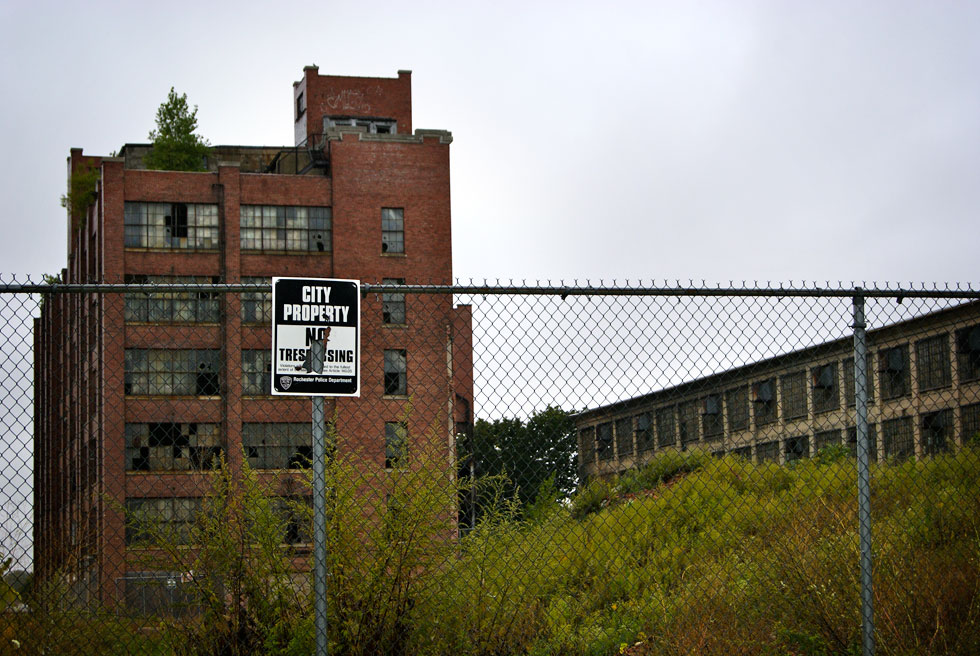
Privately Owned Vacant Structures
The Division of Code Enforcement monitors all privately owned vacant structures, visiting the locations on a regular basis but in no case less than every three weeks. During the course of conducting these inspections, city inspection staff ensures that the structure is secure and the grounds are being properly maintained and, when necessary, the following courses of action are taken:
- When the grass is more than 10 inches, the violation is cited on a Notice and Order. If it is not corrected within ten days, it is ticketed and sent to contract to be cut.
- When there is uncontained trash and debris, the violation is cited on a Notice and Order. If it is not corrected within ten days, it is ticketed and sent to contract to have the debris removed.
- When the structure is found unsecure, the inspector immediately submits a work order to have it secured.
In the situations above regarding violations of high grass and/or trash and debris, once a vacant structure has received a ticket for these violations, any subsequent issues of the same violation are immediately sent to contract to be corrected. Any time a work order is executed, the cost of correcting the violation is billed to the property owner. If the bill isn’t paid, the charge is placed on the next year’s property tax bill in accordance with §6-94 of the City Charter.
In addition to the enforcement efforts mentioned above, housing code tickets are issued to privately owned vacant structures which have exterior blight and those that have been identified as potential demolition candidates. Demolition candidates are then brought through the demolition hearing process or they are acquired through tax foreclosure and scheduled for demolition.
The City of Rochester provides access to property information via online mapping platforms. Maps are a useful tool providing the public easy access to property information. The following links allow the user to see various data and information on properties, inspectors, projects and other valuable information when inquiring about any property within the City.
Property Information
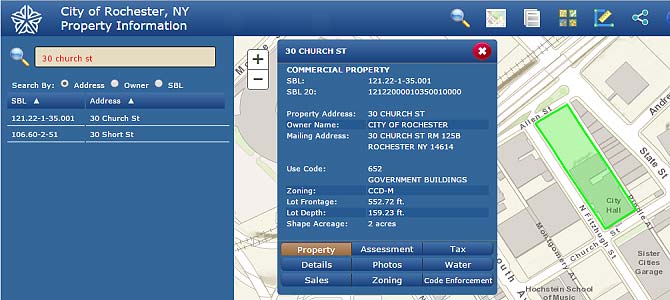
The City of Rochester’s Property Information Application provides public access to property assessment, property tax, and water billing information.
BuildingBlocks
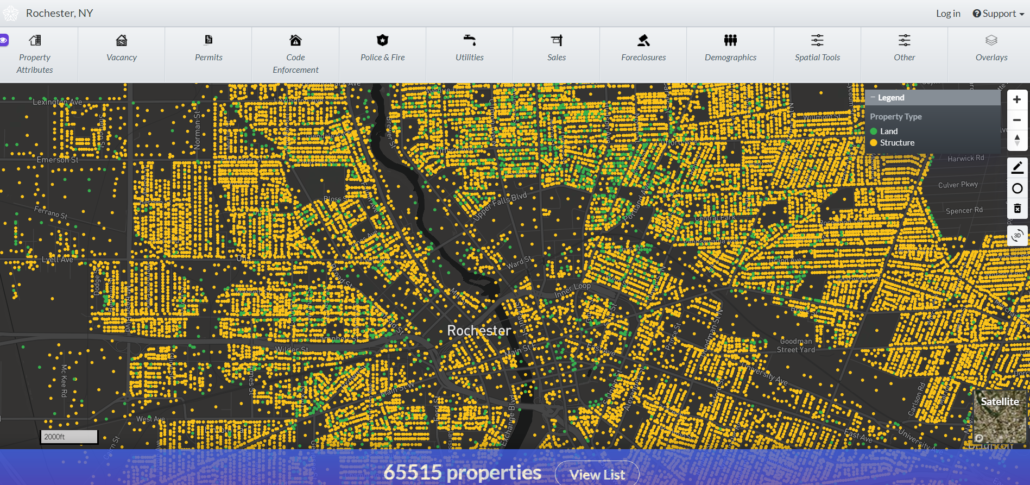
The City of Rochester is one of 18 cities throughout New York State to receive the Cities RISE (Responsible Investment and Strategic Enforcement) grant through the New York State Attorney General’s office. This grant is intended to provide assistance to municipalities in their dealings with vacant, abandoned, and blighted properties. The Cities Rise grant provides access to the BuildingBlocks platform, which integrates a variety of data sets related to the various activities associated with vacant and/or potentially problem properties.
NBD Map Gallery
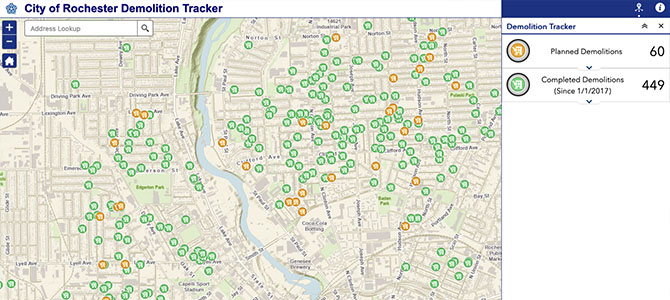
GIS is a powerful mapping tool used for asset management, data visualization, and spatial analytics.The Department of Information Technology manages the City’s GIS, providing a common platform for all city departments. We also provide the public with immediate access to public records through web applications.

